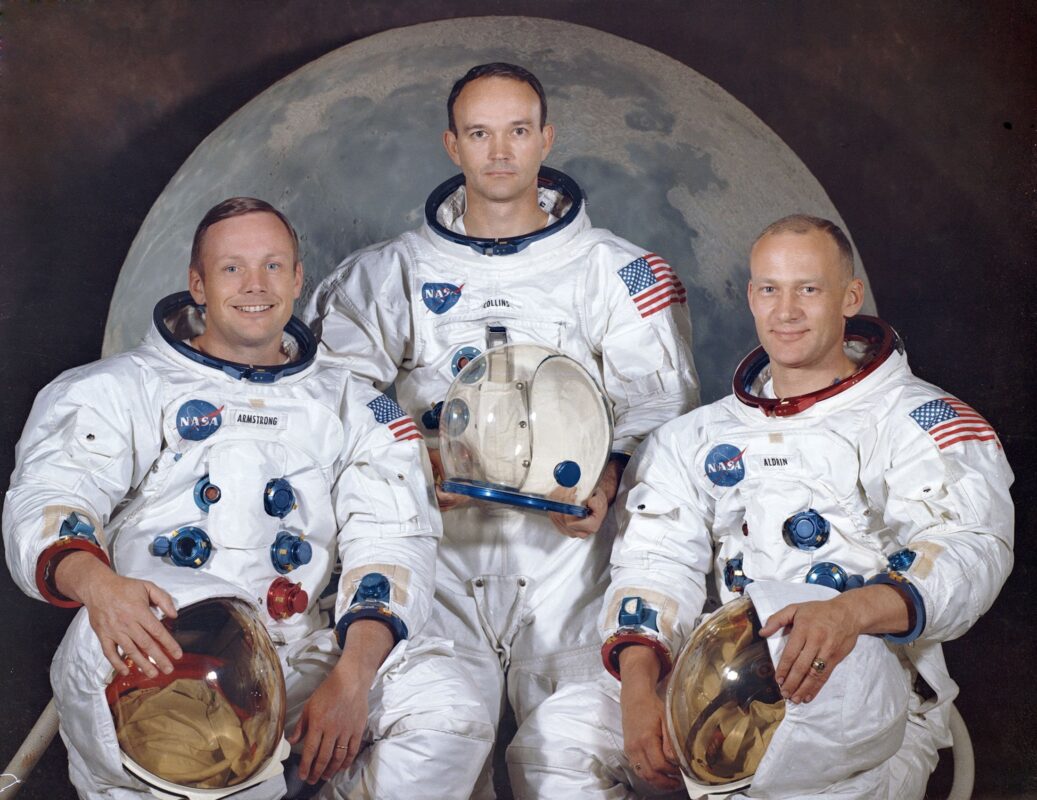Blog
The Future of NASA: Exploring the Next Frontier – 2025
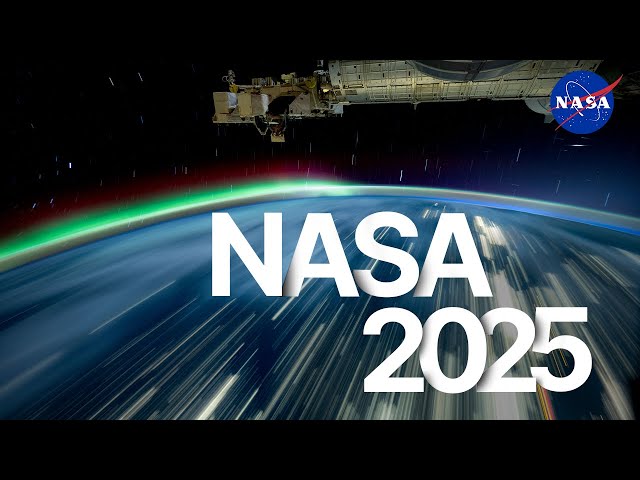
Future of NASA, the National Aeronautics and Space Administration, has been at the forefront of space exploration for over six decades. From the historic Apollo moon landings to the Mars rovers, NASA has continually expanded humanity’s understanding of the cosmos. As we look to the future, NASA is poised to transform space exploration, scientific research, and technological innovation like never before.
🔹 NASA’s Current Focus Areas
NASA’s ongoing projects reflect its commitment to advancing space exploration, scientific research, and technological innovation. Understanding these focus areas provides insight into how the agency is shaping the future of humanity in space.
1. Artemis Program: Returning Humans to the Moon
- Objective: To land the first woman and the next man on the Moon by 2025.
- Lunar Gateway: A planned space station orbiting the Moon to support long-term missions and research.
- Sustainability: Focused on establishing a long-term human presence and testing technology for future Mars exploration.
2. Mars Exploration
- Robotic Missions: NASA uses rovers like Perseverance and Curiosity to study Martian terrain, climate, and potential signs of life.
- Human Mission Planning: Developing life support systems, radiation protection, and sustainable habitats for future astronauts.
- International Collaboration: Working with agencies like ESA (European Space Agency) to share expertise and resources.
3. Earth Science and Climate Research
- Satellites and Monitoring: NASA satellites track climate change, global temperatures, and natural disasters.
- Environmental Studies: Provides data for disaster prediction, weather forecasting, and ecological research.
- Global Impact: Helps governments and organizations address climate-related challenges using scientific insights.
4. Space Technology Development
- Advanced Propulsion Systems: Developing nuclear and electric propulsion for faster interplanetary travel.
- Artificial Intelligence (AI) and Robotics: AI aids in autonomous navigation, spacecraft operations, and data analysis, while robotics supports exploration.
- In-Situ Resource Utilization (ISRU): Techniques to use local resources on the Moon or Mars for fuel, water, and building materials.
5. Space Observatories and Scientific Research
- James Webb Space Telescope (JWST): Observes distant galaxies, stars, and exoplanets to understand the universe’s origins.
- Exoplanet Exploration: Missions like TESS identify potentially habitable planets beyond our solar system.
- Astrobiology: Studies the origin, evolution, and potential for life elsewhere in the cosmos.
🔹 Summary
NASA’s current focus areas combine human exploration, robotic missions, Earth science, and advanced technology development. These priorities ensure that the agency not only expands humanity’s presence in space but also contributes to scientific knowledge, environmental monitoring, and global collaboration.
🔹 Artemis Program and Lunar Exploration
The Artemis Program is NASA’s ambitious plan to return humans to the Moon and establish a sustainable presence, serving as a foundation for future Mars missions. Named after the twin sister of Apollo in Greek mythology, Artemis represents a new era of space exploration.
🔹 Goals of the Artemis Program
- Human Landing on the Moon:
- Artemis III aims to land the first woman and the next man on the lunar South Pole by 2025.
- Focus on regions never explored by humans to gather scientific data and resources.
- Sustainable Lunar Presence:
- Develop long-term habitats and life support systems for extended stays.
- Enable continuous scientific research, resource utilization, and exploration.
- Technology Testing for Mars:
- The Moon serves as a proving ground for technologies like radiation shielding, sustainable habitats, and autonomous robotics.
- Lessons learned will support future deep space missions.
🔹 Key Components of the Artemis Program
- Orion Spacecraft:
- Designed to carry astronauts safely to lunar orbit and back to Earth.
- Equipped with advanced life support, navigation, and communication systems.
- Space Launch System (SLS):
- A powerful rocket capable of transporting Orion, cargo, and astronauts to the Moon.
- Supports both crewed missions and heavy payload deliveries.
- Lunar Gateway:
- A small space station orbiting the Moon that will serve as a hub for lunar surface operations.
- Supports research, staging for landers, and collaboration with international partners.
- Human Landing Systems (HLS):
- Lunar landers will transport astronauts from Gateway to the Moon’s surface.
- Include both NASA-developed and commercial systems, promoting public-private collaboration.
🔹 Scientific and Resource Objectives
- Exploration of Lunar South Pole: Rich in water ice, essential for fuel, life support, and sustainable missions.
- Geological Research: Understanding the Moon’s formation and history provides insight into Earth and the solar system.
- Technology Demonstration: Testing habitats, energy systems, and autonomous robots to support future interplanetary exploration.
🔹 International Collaboration
- NASA partners with ESA, JAXA, CSA, and other agencies for Gateway development, lander support, and scientific research.
- Promotes peaceful cooperation in space and shared technological advancement.
🔹 Summary
The Artemis Program is more than a mission to the Moon—it is a strategic stepping stone for humanity’s expansion into the solar system. By combining cutting-edge technology, international partnerships, and sustainable exploration, NASA aims to inspire a new generation, advance scientific knowledge, and prepare for humanity’s journey to Mars and beyond.
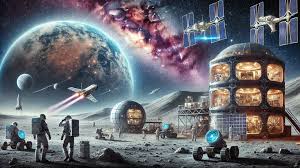
🔹 Human Missions to Mars
Mars has long captured humanity’s imagination as the next frontier for space exploration. NASA’s goal of sending humans to the Red Planet represents a historic leap in technology, science, and human endurance. Preparing for Mars missions requires extensive planning, innovative technology, and international collaboration.
🔹 Why Mars?
- Scientific Discovery:
- Search for signs of past or present life.
- Study Mars’ climate, geology, and potential for supporting human life.
- Preparation for Deep Space Exploration:
- Mars serves as a testing ground for technologies needed for even deeper space missions.
- Includes life support systems, habitats, and autonomous robotics.
- Human Expansion:
- Sending astronauts to Mars is a step toward humanity becoming a multi-planetary species.
- Encourages global collaboration and investment in space infrastructure.
🔹 Robotic Precursors
Before humans set foot on Mars, NASA is relying on robotic missions:
- Perseverance Rover: Collects rock samples, studies soil, and searches for biosignatures.
- Curiosity Rover: Provides data on Mars’ climate and geology to support human missions.
- Mars Helicopter Ingenuity: Demonstrates aerial exploration capabilities for future scouting missions.
These robotic missions help identify safe landing sites, water resources, and potential hazards for astronauts.
🔹 Preparing for Human Survival
Human missions to Mars face unique challenges:
- Radiation Exposure:
- Astronauts must be shielded from cosmic rays and solar radiation.
- Research on protective habitats and radiation-blocking materials is ongoing.
- Life Support Systems:
- Development of closed-loop systems to recycle water, oxygen, and waste.
- Essential for long-duration missions lasting months or years.
- Sustainable Habitats:
- Plans include inflatable habitats, underground bases, and 3D-printed structures using Martian soil.
- Supports long-term exploration and research.
- Psychological and Social Challenges:
- Astronauts must endure isolation, confinement, and communication delays.
- NASA studies team dynamics and mental health solutions to ensure mission success.
🔹 Transportation and Propulsion
- Space Launch System (SLS) and Orion: Will transport astronauts from Earth to lunar or Mars-orbit staging points.
- Nuclear Thermal and Electric Propulsion: Potentially reduces travel time to Mars, making missions safer and more feasible.
- In-Situ Resource Utilization (ISRU): Using Martian water and soil to produce fuel, oxygen, and building materials for long-term sustainability.
🔹 International Collaboration
- NASA works with ESA, JAXA, Roscosmos, and private companies to share technology, reduce costs, and enhance safety.
- Collaboration allows joint development of habitats, life support systems, and scientific research.
🔹 Timeline and Future Prospects
- 2030s: NASA targets crewed missions to Mars, building on Artemis lunar experience.
- Beyond: Establish semi-permanent settlements, conducting science, resource extraction, and testing technologies for interplanetary travel.
🔹 Summary
Human missions to Mars represent a bold step for humanity, combining scientific curiosity, advanced technology, and international cooperation. NASA is carefully preparing for the risks, logistics, and technological challenges of sending astronauts to the Red Planet, ensuring that when humans arrive, they are equipped to survive, explore, and expand humanity’s presence in space.
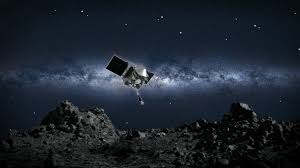
🔹 Space Technology Innovations
NASA’s future missions to the Moon, Mars, and beyond rely heavily on cutting-edge technology. Innovations in propulsion, robotics, artificial intelligence, and sustainable systems are essential to make deep space exploration safer, faster, and more efficient.
🔹 Advanced Propulsion Systems
- Nuclear Thermal Propulsion (NTP):
- Uses nuclear reactions to heat propellant, producing higher efficiency than chemical rockets.
- Could significantly reduce travel time to Mars, decreasing astronauts’ exposure to radiation.
- Electric Propulsion:
- Ion thrusters provide continuous, high-efficiency thrust over long durations.
- Ideal for cargo missions and deep space probes.
- Reusable Rockets:
- Developed in collaboration with companies like SpaceX, reusable rockets reduce costs and increase mission frequency.
🔹 Robotics and Automation
- Robotic Rovers and Drones: Explore hazardous terrain, conduct experiments, and prepare landing sites.
- Autonomous Systems: Allow spacecraft and rovers to navigate, analyze data, and make decisions independently.
- Robotic Assistants for Astronauts: Support construction, maintenance, and scientific tasks on the Moon or Mars.
🔹 Artificial Intelligence (AI)
- Mission Planning and Control: AI helps optimize flight paths, monitor spacecraft health, and predict system failures.
- Data Analysis: AI processes vast amounts of data from telescopes, rovers, and satellites, accelerating discoveries.
- Human-AI Collaboration: Improves efficiency in space operations, resource management, and problem-solving.
🔹 Sustainable Space Systems
- Life Support Systems:
- Closed-loop systems recycle air, water, and waste for long-duration missions.
- Essential for Mars habitats and lunar bases.
- In-Situ Resource Utilization (ISRU):
- Uses local resources like Martian soil and water ice to produce fuel, building materials, and oxygen.
- Reduces dependency on supplies from Earth, making missions more self-sufficient.
- Energy Solutions:
- Advanced solar arrays, nuclear reactors, and energy storage systems provide power for habitats, rovers, and scientific instruments.
🔹 Space Habitats and 3D Printing
- Inflatable and Modular Habitats: Lightweight, expandable structures for Moon or Mars missions.
- 3D-Printed Structures: Uses local materials to build durable shelters and landing pads.
- Radiation Shielding: Innovations in materials protect astronauts from cosmic rays and solar radiation.
🔹 Advanced Communication Systems
- Deep Space Networks (DSN): Enable high-bandwidth communication between Earth and spacecraft millions of miles away.
- Laser Communication: Offers faster, more reliable data transfer than traditional radio systems.
- Autonomous Communication Protocols: Allow spacecraft to operate independently when communication delays occur.
🔹 Summary
NASA’s space technology innovations are crucial for the next era of human exploration. From advanced propulsion and AI-driven systems to robotics, sustainable habitats, and communication networks, these technologies make it possible to safely explore the Moon, Mars, and beyond. By continuously pushing technological boundaries, NASA ensures that humanity’s journey into the cosmos is ambitious, sustainable, and transformative.
🔹 NASA’s Role in Space Commercialization
NASA is no longer the sole player in space exploration. In recent years, the agency has embraced collaboration with private companies, fostering a new era of space commercialization. By partnering with businesses, NASA leverages innovation, efficiency, and funding, accelerating humanity’s journey to the Moon, Mars, and beyond.
🔹 Public-Private Partnerships
- NASA collaborates with companies like SpaceX, Blue Origin, and Northrop Grumman to provide spacecraft, launch services, and logistics.
- Programs like Commercial Crew and Commercial Resupply Services allow private firms to deliver astronauts and cargo to the International Space Station (ISS).
- These partnerships reduce costs, increase mission frequency, and foster technological innovation.
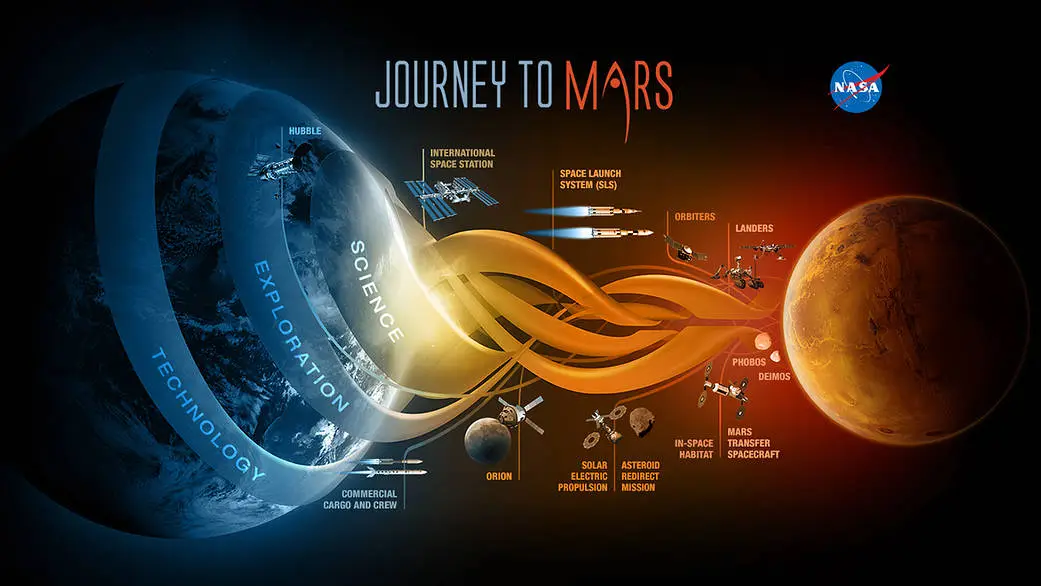
🔹 Lunar Economy
- The Artemis Program encourages private participation in Moon missions.
- Companies can develop lunar landers, habitats, and resource extraction technologies, including mining water ice for fuel and life support.
- NASA’s commercial strategy helps create a sustainable lunar economy while sharing expertise with industry partners.
🔹 Orbital Research and Space Tourism
- NASA supports commercial platforms for scientific experiments in low-Earth orbit.
- Partnerships allow private companies to offer space tourism, in-space manufacturing, and research opportunities.
- These initiatives generate revenue, technological growth, and public interest in space exploration.
🔹 Accelerating Innovation
- Private companies often develop cutting-edge technologies faster than government agencies alone.
- Collaboration enables NASA to test new propulsion systems, robotics, AI applications, and life support technologies in real missions.
- This symbiotic relationship benefits both national space goals and private sector growth.
🔹 Future Prospects
- Commercial Lunar Landers: Private companies will transport cargo and astronauts to the Moon.
- Deep Space Missions: Partnerships may extend to Mars exploration, asteroid mining, and outer planet missions.
- Space Infrastructure: Construction of orbital habitats, fuel depots, and communication networks could be driven by commercial expertise.
🔹 Summary
NASA’s role in space commercialization reflects a strategic shift from government-led missions to collaborative, public-private endeavors. By partnering with innovative companies, NASA reduces costs, accelerates technological development, and opens opportunities for private industry. This approach ensures a more sustainable, ambitious, and economically viable future for human space exploration.
🔹 NASA and International Collaboration
NASA recognizes that space exploration is a global endeavor. By collaborating with international space agencies and organizations, NASA maximizes resources, shares expertise, and promotes peaceful scientific cooperation. These partnerships are essential for tackling the complex challenges of deep space exploration.
🔹 Key International Partners
- European Space Agency (ESA):
- Collaborates on projects like the Lunar Gateway, Mars exploration, and Earth observation missions.
- Provides scientific instruments, technology, and research expertise.
- Japan Aerospace Exploration Agency (JAXA):
- Contributes advanced robotics, lunar modules, and satellite technology.
- Supports international lunar exploration and Mars missions.
- Canadian Space Agency (CSA):
- Known for developing robotic systems like the Canadarm, critical for ISS operations.
- Provides expertise in robotics and remote operations for lunar and Martian missions.
- Other Partners:
- Countries such as Australia, South Korea, and Russia participate in scientific research, deep space observation, and technological development.
🔹 Collaborative Programs
- Artemis Accords:
- Agreements with multiple countries to promote peaceful lunar exploration and responsible resource utilization.
- Establishes a framework for transparency, safety, and cooperation.
- International Space Station (ISS):
- A model of multinational collaboration with NASA, ESA, JAXA, Roscosmos, and CSA.
- Supports scientific research, technology development, and astronaut training for deep space missions.
- Joint Mars Exploration Efforts:
- NASA collaborates on Mars rovers, orbiters, and future human missions with international partners to share data and reduce mission risks.
🔹 Benefits of International Collaboration
- Shared Costs: Joint missions reduce financial burdens on individual countries.
- Technological Exchange: Sharing expertise accelerates innovation in propulsion, robotics, AI, and life support systems.
- Scientific Advancement: Collaborative research improves understanding of planetary science, astrobiology, and Earth monitoring.
- Global Diplomacy: Promotes peaceful cooperation and mutual trust among nations.
🔹 Future Prospects
- Lunar Gateway Expansion: More international partners may contribute modules and research facilities.
- Mars Colonization Efforts: Collaborative planning and construction of habitats, transportation systems, and resource utilization.
- Deep Space Observatories: Joint missions to study exoplanets, asteroids, and outer planets.
🔹 Summary
NASA’s international collaborations are crucial for sharing knowledge, reducing costs, and advancing global space exploration goals. By working with agencies like ESA, JAXA, and CSA, NASA ensures that humanity’s journey into space is a collective effort, fostering innovation, scientific discovery, and peaceful cooperation for decades to come.
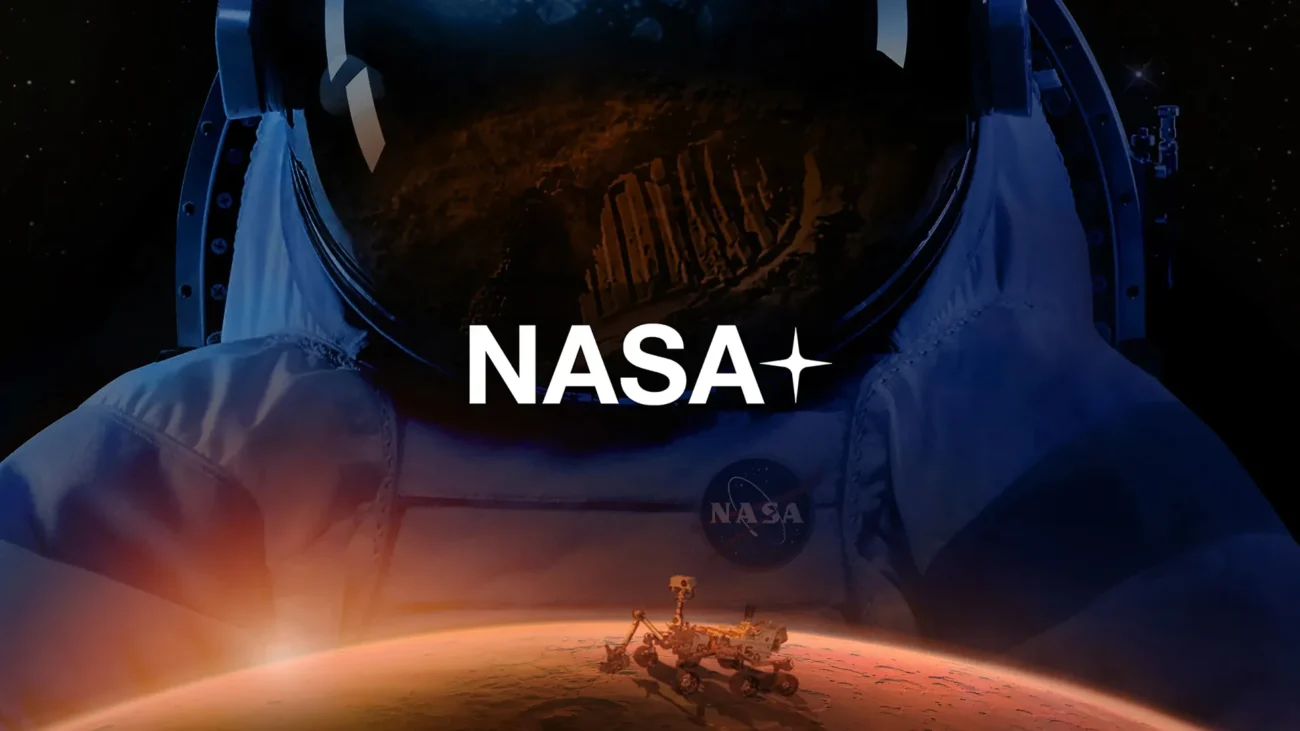
🔹 Scientific Research and Space Observatories
NASA is at the forefront of scientific discovery, using advanced instruments, space telescopes, and research programs to expand humanity’s understanding of the universe. These missions explore everything from distant galaxies and exoplanets to the fundamental origins of life.
🔹 James Webb Space Telescope (JWST)
- Objective: To observe the earliest galaxies, stars, and planetary systems formed after the Big Bang.
- Capabilities: Infrared imaging allows scientists to see through cosmic dust and detect distant celestial objects.
- Impact: JWST provides unprecedented insight into planet formation, star evolution, and potential habitable exoplanets.
🔹 Exoplanet Exploration
- TESS (Transiting Exoplanet Survey Satellite):
- Identifies planets orbiting distant stars, particularly those in the habitable zone.
- Kepler Mission:
- Discovered thousands of exoplanets, revolutionizing our understanding of planetary systems.
- Future Missions:
- NASA plans additional observatories to study atmospheres, climates, and chemical compositions of exoplanets.
🔹 Astrobiology Programs
- NASA’s astrobiology research investigates the origin, evolution, and potential for life beyond Earth.
- Studies include Mars soil analysis, ocean worlds like Europa and Enceladus, and extremophile organisms on Earth.
- Findings guide human exploration strategies and the search for extraterrestrial life.
🔹 Space Telescopes and Observatories
- Hubble Space Telescope: Continues to provide high-resolution images of galaxies, nebulae, and cosmic phenomena.
- Chandra X-ray Observatory: Observes high-energy events like black holes and supernovae.
- Upcoming Missions: Focus on infrared, ultraviolet, and X-ray astronomy, enabling multi-wavelength observation of the universe.
🔹 Earth Science Research
- NASA’s satellites monitor climate change, atmospheric conditions, ocean currents, and natural disasters.
- Data supports disaster prediction, environmental policy, and global climate understanding.
- Programs like Landsat and Earth Observing System (EOS) provide long-term datasets for research and planning.
🔹 Summary
NASA’s scientific research and space observatories are key drivers of discovery, advancing our knowledge of the cosmos, exoplanets, and the potential for life beyond Earth. By combining space telescopes, robotic missions, and Earth observation satellites, NASA ensures that humanity continues to explore, learn, and innovate at the frontier of space science.
🔹 Challenges Facing NASA
While NASA has ambitious plans for the Moon, Mars, and deep space exploration, the agency faces a variety of technical, financial, and operational challenges. Addressing these obstacles is critical for ensuring the success and safety of future missions.
🔹 Funding and Budget Constraints
- NASA’s projects are highly expensive, requiring billions of dollars for spacecraft, research, and astronaut missions.
- Political priorities and budget fluctuations can delay programs like Artemis or Mars missions.
- Balancing long-term exploration goals with short-term fiscal realities is an ongoing challenge.
🔹 Long-Duration Spaceflight Risks
- Radiation Exposure:
- Deep space travel exposes astronauts to cosmic rays and solar radiation, increasing health risks.
- Effective shielding and medical countermeasures are essential for safety on Mars missions.
- Microgravity Effects:
- Extended periods in microgravity cause bone density loss, muscle atrophy, and cardiovascular issues.
- NASA is developing exercise regimens and medical interventions to mitigate these effects.
- Psychological Challenges:
- Astronauts face isolation, confinement, and communication delays during long missions.
- Mental health support and team dynamics management are critical for mission success.
🔹 Technical Challenges
- Propulsion and Transportation: Developing reliable, efficient propulsion systems for deep space missions remains a hurdle.
- Life Support and Habitat Systems: Long-term habitats require recycling water, oxygen, and energy efficiently.
- Landing on Mars or the Moon: Ensuring safe landings on harsh terrains with heavy payloads is technologically demanding.
🔹 Space Debris and Environmental Hazards
- Low-Earth orbit is increasingly crowded with satellites and debris, posing collision risks.
- NASA must track debris, plan safe trajectories, and develop mitigation strategies.
- Space weather, including solar flares, can damage spacecraft electronics and communication systems.
🔹 International and Logistical Coordination
- Coordinating with multiple international partners and private companies adds complexity.
- Ensuring compatibility of technologies, timelines, and mission objectives requires careful planning.
- Collaboration is essential but can introduce delays and operational challenges.
🔹 Summary
NASA faces a range of challenges, from budget limitations and technical hurdles to human health risks and space hazards. Overcoming these obstacles requires innovation, careful planning, international cooperation, and resilience. Addressing these challenges ensures that NASA can safely pioneer the next era of human and robotic exploration in space.
🔹 Future Visions: Beyond the Moon and Mars
NASA’s vision extends far beyond the Moon and Mars. The agency is exploring innovative missions across the solar system and even into interstellar space, ensuring that humanity’s journey into the cosmos continues for decades to come. These ambitious plans combine scientific discovery, technological innovation, and long-term human expansion.
🔹 Asteroid Missions
- Objectives: Study near-Earth and distant asteroids for scientific knowledge and planetary defense.
- Resource Potential: Some asteroids may contain water, metals, and rare minerals usable for space missions.
- Planetary Defense: Monitoring asteroids helps predict and prevent potential collisions with Earth.
🔹 Outer Planets Exploration
- Jupiter and Its Moons: NASA missions, such as Europa Clipper, study Europa’s subsurface ocean for signs of life.
- Saturn and Titan: Investigating Titan’s methane lakes and Enceladus’ plumes could reveal insights into prebiotic chemistry.
- Scientific Goals: Understanding these worlds helps answer fundamental questions about the formation and evolution of the solar system.
🔹 Interstellar Exploration
- Long-Term Concepts: NASA is exploring missions beyond the solar system using advanced propulsion technologies.
- Objectives: Study interstellar space, nearby star systems, and potentially habitable exoplanets.
- Technological Requirements: Requires breakthroughs in propulsion, energy generation, and communication.
🔹 Space Habitats and Colonization
- NASA envisions permanent bases on the Moon and Mars, which could serve as launch points for deep space missions.
- Concepts include 3D-printed habitats, underground bases, and inflatable modules to sustain human life for long durations.
- These initiatives prepare humanity for multi-planetary existence.
🔹 Advanced Robotics and AI in Future Missions
- Robots will explore hazardous or distant environments before humans arrive.
- AI will assist in autonomous decision-making, data analysis, and mission planning.
- These technologies reduce risk and increase mission efficiency across extreme environments.
🔹 Summary
NASA’s future visions go well beyond the Moon and Mars, encompassing asteroid exploration, outer planet missions, and interstellar ambitions. Through innovative technology, robotics, AI, and sustainable habitats, NASA aims to expand human presence across the solar system and beyond, securing humanity’s place as an interplanetary species. These plans reflect NASA’s enduring mission to explore, discover, and inspire generations to come.
🔹 Educational and Workforce Development
NASA’s vision for the future extends beyond missions and technology—it also focuses on preparing the next generation of scientists, engineers, and astronauts. By investing in education, internships, fellowships, and public outreach, NASA ensures that the human capital necessary for future space exploration is trained, motivated, and equipped to tackle complex challenges.
🔹 STEM Education Initiatives
- Science, Technology, Engineering, and Mathematics (STEM): NASA promotes STEM education worldwide to inspire young minds to pursue careers in space-related fields.
- Educational Programs: Includes initiatives like NASA’s STEM Engagement Program, NASA Robotics, and NASA Space Apps Challenge.
- Goals: Develop skills in robotics, coding, physics, space science, and data analysis to support future missions.
🔹 Internships and Fellowships
- Opportunities for Students: NASA offers hands-on experience in mission design, research, and engineering projects.
- Fellowship Programs: Programs like the NASA Postdoctoral Program allow young researchers to contribute to space missions and advanced studies.
- Global Collaboration: Some programs are open to international students, promoting cross-border learning and cooperation.
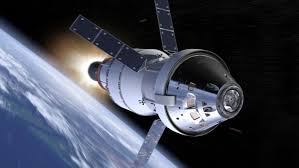
🔹 Public Engagement and Outreach
- Live Missions and Social Media: NASA shares real-time updates, videos, and interactive content from space missions.
- Museums and Science Centers: Collaborations with planetariums, museums, and science festivals help educate the public.
- Virtual Learning Platforms: Offer access to NASA datasets, educational games, and online workshops.
🔹 Workforce Development for Future Missions
- Training Astronauts: NASA trains astronauts in spaceflight operations, robotics, survival skills, and scientific research.
- Engineering and Technical Workforce: Engineers and scientists are trained to develop advanced propulsion, AI, life support, and robotic systems.
- Continuous Learning: Programs ensure employees remain up-to-date with emerging technologies and international space standards.
🔹 Promoting Diversity and Inclusion
- NASA actively promotes diversity and inclusion, ensuring that future space exploration is powered by a broad range of perspectives, skills, and talents.
- Initiatives focus on underrepresented groups, women in STEM, and international collaboration.
🔹 Summary
NASA’s educational and workforce development programs are essential for sustaining the agency’s ambitious goals. By inspiring the next generation, providing hands-on experience, and fostering diverse talent, NASA ensures that humanity has the knowledge, skills, and innovation capacity needed for safe, successful, and transformative space exploration.
🔹 Conclusion
The future of NASA is ambitious, transformative, and inspiring. From returning humans to the Moon through the Artemis Program to preparing for human missions to Mars, NASA is shaping humanity’s journey into the cosmos. Its vision extends beyond our solar system, with plans for asteroid exploration, outer planet missions, and even interstellar travel.
NASA’s progress relies on a combination of advanced technology, robotics, artificial intelligence, and sustainable systems, ensuring that space exploration is safer, more efficient, and more impactful than ever before. Public-private partnerships with companies like SpaceX and Blue Origin, as well as international collaborations with agencies like ESA, JAXA, and CSA, amplify NASA’s capabilities and accelerate its missions.
Equally important is NASA’s investment in scientific research, space observatories, and Earth observation programs, which deepen humanity’s understanding of the universe and our home planet. Furthermore, NASA is preparing the next generation of scientists, engineers, and astronauts through robust educational programs, internships, and STEM initiatives.
Despite facing challenges such as budget constraints, long-duration spaceflight risks, technical hurdles, and space hazards, NASA continues to innovate, inspiring humanity to explore, discover, and boldly go where no one has gone before.
In summary, NASA is not just a space agency—it is a symbol of human curiosity, ingenuity, and ambition, ensuring that the future of space exploration is bright, collaborative, and limitless.
30 FAQs About the Future of NASA
General Questions
- What is NASA and what does it do?
NASA is the National Aeronautics and Space Administration, responsible for space exploration, scientific research, and technological innovation. - What are NASA’s current major focus areas?
NASA focuses on the Artemis Program, Mars exploration, Earth science, space technology, and scientific research. - What is the Artemis Program?
Artemis is NASA’s mission to return humans to the Moon and establish a sustainable lunar presence as a stepping stone for Mars exploration. - When will humans return to the Moon?
NASA aims to land the first woman and the next man on the Moon by 2025 through Artemis III. - What is the Lunar Gateway?
The Lunar Gateway is a space station orbiting the Moon, serving as a hub for research, lunar missions, and international collaboration.

Mars Exploration
- When will humans go to Mars?
NASA targets crewed missions to Mars in the 2030s, building on Artemis lunar experience. - What are the main challenges of human missions to Mars?
Challenges include radiation exposure, life support, long-duration spaceflight, psychological effects, and safe landing on Mars. - Which rovers are currently exploring Mars?
Key rovers include Perseverance, Curiosity, and the Mars Helicopter Ingenuity. - Why is Mars important for NASA?
Mars is a scientific frontier for studying past or present life, planetary evolution, and potential human colonization. - How is NASA preparing astronauts for Mars?
Training includes life support management, habitat simulations, robotics operation, and psychological support.
Space Technology
- What propulsion systems is NASA developing?
NASA develops nuclear thermal propulsion, electric propulsion, and reusable rockets for faster, safer space travel. - How does NASA use robotics in space?
Robots explore hazardous terrains, assist astronauts, perform autonomous tasks, and test new technologies. - How does AI help NASA missions?
AI assists in autonomous navigation, data analysis, mission planning, and spacecraft operation. - What is In-Situ Resource Utilization (ISRU)?
ISRU uses local resources on the Moon or Mars for fuel, building materials, and oxygen, reducing dependency on Earth. - What are NASA’s sustainable space systems?
These include closed-loop life support, energy-efficient habitats, and resource recycling systems.
Space Commercialization
- How is NASA collaborating with private companies?
NASA partners with SpaceX, Blue Origin, and Northrop Grumman for launches, spacecraft, and lunar missions. - What is NASA’s Commercial Crew Program?
A program that contracts private companies to transport astronauts to the ISS. - How does space commercialization benefit NASA?
It reduces costs, accelerates technology development, and increases mission frequency. - What role do private companies play in lunar exploration?
Private companies develop landers, habitats, and resource extraction technologies for Moon missions. - Is NASA involved in space tourism?
NASA supports commercial platforms for orbital research and private spaceflight, indirectly facilitating space tourism.
International Collaboration
- Which international agencies does NASA collaborate with?
NASA works with ESA (Europe), JAXA (Japan), CSA (Canada), and other global partners. - What are the Artemis Accords?
Agreements promoting peaceful lunar exploration, transparency, and international cooperation. - How does the ISS demonstrate international collaboration?
The ISS is a multi-nation research lab enabling shared technology, science, and astronaut missions. - Why is international collaboration important for NASA?
Collaboration reduces costs, shares expertise, and advances scientific discovery. - Are other countries involved in Mars missions?
Yes, NASA collaborates with ESA and other international agencies to share data and technology.
Scientific Research and Space Observatories
- What is the James Webb Space Telescope (JWST)?
JWST observes distant galaxies, stars, and exoplanets, providing insight into the universe’s origins. - How does NASA study exoplanets?
Through missions like TESS and Kepler, NASA identifies planets in the habitable zone of distant stars. - What is NASA’s astrobiology program?
Astrobiology studies the origin, evolution, and potential for life beyond Earth, including research on Mars, Europa, and Enceladus. - How does NASA monitor Earth?
Satellites track climate change, natural disasters, and environmental changes, aiding scientific research and global policy. - Why is NASA’s research important for the future?
NASA’s research advances science, supports human exploration, and inspires innovation, ensuring humanity’s long-term presence in space.

